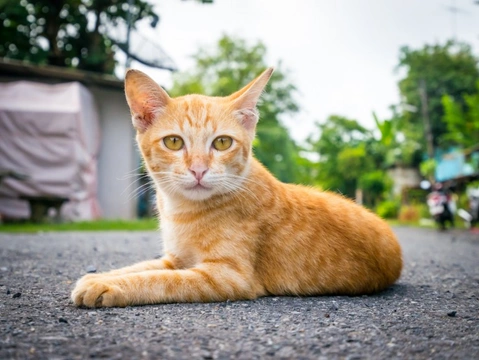
Six interesting facts about ginger cats
All cats are beautiful and distinctive in their own special ways, but one of the most striking-looking cats in terms of their appearances are the ever-popular ginger cats, and a confident, bold ginger cat walking around your neighbourhood will always stand out!
If you own a ginger cat, have your heart set on buying or adopting one or just want to know more about what makes these beautiful cats who they are, in this article we will share six interesting facts about ginger cats to get you started! Read on to learn more.
The cause of the ginger colouration
The coat colour and pattern that any given cat will display comes down to a combination of their inherited traits and in some cases, environmental factors too.
Pigmentation in the skin is what causes the colour of the coat, and this pigmentation may combine with melanin to cause a lighter or darker ginger shade, and for some cat breeds, the extremities of the body will display a different colour to their trunk!
The pigmentation responsible for causing the ginger coat colouration is called pheomelanin, and can range in shade from a very dark red-ginger-almost like auburn hair-to a very pale cream colour with just a hint of orange within it.
Ginger cat coat patterns can be highly variable
When was the last time you saw a ginger cat that was self-coloured-just one uniform orange shade all over? The chances are, never! Just as the shade of ginger itself can be highly variable across different ginger cats, so too can the pattern that the cat displays within the coat.
Ginger cats are usually tabby cats, with tabby markings-which come in four different types, being classic, mackerel or striped, spotted, and ticked.
Mackerel ginger tabbies are the most common, and this is the appearance that most of us bring to mind when we think about ginger cats, with this being the pattern that causes reasonably evenly spaced horizontal stripes along the cat’s body, like a tiger!
Classic tabbies are the next most common, and the classic tabby pattern has a more marbled appearance with circles and whorls of colour, rather than uniformly spaced lines.
Spotted ginger tabby cats have a very distinctive appearance of darker spots on their coats, which may come accompanied by stripes or rings on the legs and tails. This pattern colouration is one that is commonly associated with the Bengal cat breed, although it can appear in moggies too!
Finally, ticked tabby markings involve what are known as agouti markings, which means that the colour of each individual hair in the coat differs along its length, leading to a ticked-type of pattern. If you spot a ginger cat from a distance that you think is uniformly ginger all over, a closer look will almost certainly reveal them to be a ticked tabby!
Ginger cats appear in all sorts of different breeds
Ginger is a colour, and not a breed in its own right-and the majority of domestic ginger cats are moggies or mixed breeds. However, the ginger colour is recognised in the breed standard of a wide range of different cat breeds, including the Bengal as mentioned above, and also the Abyssinian, which has the ticked tabby pattern, and the red point Siamese, which has ginger colour points.
Ginger cats are usually male
Historically, there used to be a false assumption made that ginger cats were always male-but this is of course not true. However, it is certainly true that the majority of ginger coloured cats are male-75-80% of them, in fact-and the reasons for this are unclear.
On the other side of the coin, tortoiseshell cats are almost always female-with only 0.3% of tortie cats being male, and these usually being sterile-and yet, the tortie pattern often includes areas of ginger fur!
They tend to be the easiest colour cats to rehome
It is reasonably well known that black cats are the hardest cats to rehome, and those that are most likely to be overlooked in shelters-followed by black and white cats. In terms of the easiest cats to rehome by colour, tabbies in general tend to have a good success rate, potentially simply by virtue of being the most common cat colour-but ginger cats are actually those that tend to be the most appealing to adopters, and those least likely to have problems finding a new home.
Their colouration does not cause specific personality traits
A lot of personality traits are anecdotally assigned to people with red hair, including a short temper and high levels of passion! However, much as such statements have no more truth than the average old wives tale, the ginger colouration in a cat tells you precisely nothing about their personalities either!
Ginger cats from within set pedigree breeds are likely to display the usual breed specific traits-but the colour itself does not cause or enhance any specific personality traits!



